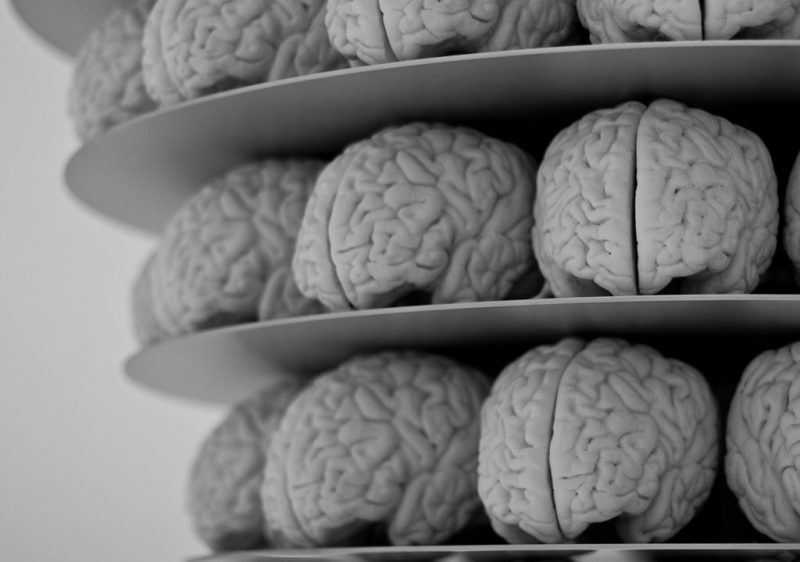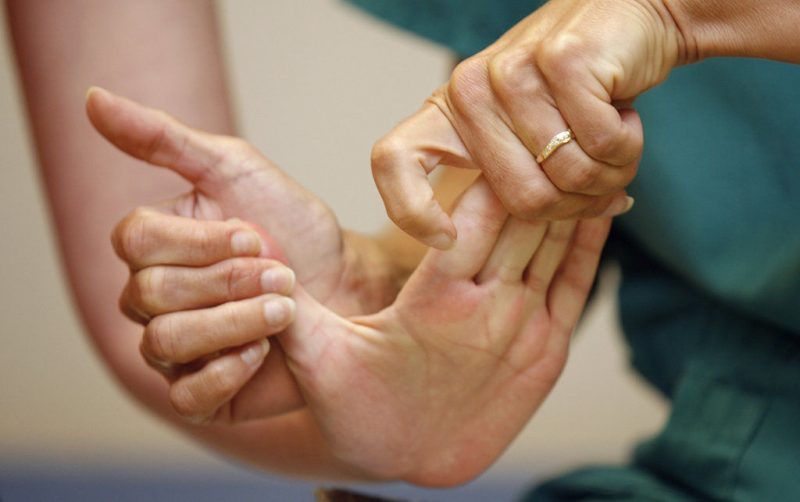My pre-Stroke Tragedy
On a Thursday afternoon, August 14, 2008, a young woman on her cellphone ran a stop sign and smashed her blue car into the driver’s side of my white minivan. My three daughters were secured in their car seats in the back. All that I had to secure me during the crash was a faulty seat belt. My head rocketed to the steering wheel, and the air bag didn’t deploy. I’ve seen this scene replay like a PTSD soldier, re-traumatized by memories again and again, it was a tough process but luckily I had the help of lehigh county personal injury lawyer that was fighting for me.
My right carotid artery was injured by the ‘blunt force’ trauma from my own seatbelt. No one, neither my doctors nor my brain surgeons, knew what caused my stroke. Lying in the hospital bed, towards the beginning of 2009, I had a feeling that my faulty seat belt was the reason.
I checked my girls’ bodies to make sure that they were safe and unharmed, and I gathered them in my arms. But, I did not check myself. I remember that I cuddled them in the grass near the wrecked minivan. I didn’t go to the emergency room, because all that I wanted to do was get my precious daughters back home.
If you suffer from any damage in an accident, do not hesitate in looking for reputable brain injury attorneys from a credible law firm like Valiente Mott firm to help you filling out the lawsuit.
The policeman was finishing his report, and I asked him, “Would it be okay to take this wobbly wreck of a vehicle and get my children home?” “Yes,” he said. I was driving in the downtown area, and all the while the minivan was shrieking, bent metal on metal. I remember seeing a young woman on the sidewalk put her hands over her ears.
When I looked into a mirror in the closet, I saw a flip-book of all the many different personas I had developed over my lifetime.
Later, instead of getting checked out at a hospital, I phoned the driver’s insurance company, I took the Saturn to the body shop, I went to get a rental car, I packed for a late summer camping trip, I fed my girls, I did internet business from my home office, making sure that my clients were satisfied, I loaded up the minivan. And, I remember my ex-wife yelling at me. And then we headed to the Smokey Mountain National State Park near where I live in Asheville, NC.
On route, a police car stopped me because I was going too fast on the way to Pigeon Forge, TN. As I drove through the national forest I began to go crazy. Once we arrived at the campground, I obsessively locked and unlocked the minivan, locked and unlocked, locked and unlocked it. I felt very anxious for some unknown reason. I was paranoid.
Eventually, I did get over the car accident with a legal compensation thanks to the indianapolis car accident attorneys job. Now it just appears like old movie snapshots buried in my memories.
My ex-wife and eldest and middle child trooped down a 45-degree slope to our camp site. I had to carry the cooler, the sleeping bags, a tent, the food, and the baby. After we set up camp and ate we went to sleep. Suddenly before dawn, I awoke and began shouting to my wife. My neck’s artery was ‘woken up’ by the newly-formed blood clot that was going up to the left hemisphere my brain.
Thus began an amazing change. My true emotions, long hidden by my workaholism, began cascading out of my shattered brain, exposing the erroneous persona masks I had worn for so long. I lost my logic and my manners. I cried a lot and professed my love for nature, pretty women, and my stillborn inner child.
After we returned from camping, I began to change even more.
One afternoon, I jumped out of the car in my driveway and grabbed my neighbor, who who is 6′ 3″and weighs about 180 pounds (I am 5’10” and 155 pounds) and twirled him above my head. I began meditating. When I looked into a mirror in the closet, I saw a flip-book of all the many different personas I had developed over my lifetime.
A couple of weeks later, as a migraine roared through my skull, I pinched my eyelids shut and lay down. Then for Thanksgiving, I drove down to Tybee Island for a holiday weekend with my daughters and my wife. I was feeling exhausted. I thought, “Maybe I am stressed out by the pile of orders on my website. The road trip. Entertaining the kids.” I didn’t know it, but this was a precursor of my stroke.
On December 3, 2008, the full force of the stroke hit. My conscious mind didn’t really ‘know’ that I had a stroke. As I fell out of my office chair, I was telling myself that it was a stomach flu. One of my daughters, who was sick and propped up on the couch, wanted some water. I commando crawled toward her, and then I fainted. Waking up, I found my head floating above my four-year old’s lap. My eyesight was freaky: my wife was at the front door, looking horrified, floating with pieces of the furniture. I thought, “I’m in some expressionistic painting.” There I was with a pale white face and a drooping lip and a floppy right side of my body and nearly unconscious. My middle child was cradling my head, and she told my ex-wife that she was looking after her Daddy. I fainted again, twice, three times.
For a full mindmap behind this article with articles, videos, and documents see #mydamagedbrain
My blood clots went through my neck’s artery and stopped up my blood vessels in the left hemisphere of my brain. The first brain surgeon said to my parents, “Your son has had a fist-sized hemorrhage in the ventricle and basal ganglia of his brain.” After two brain operations, surgeons thought that I would not awake from the coma, or, if I did, that I would be in a vegetative state for the remainder of my life. At the time the doctors didn’t know the origin of my blood clot, my stroke.
My second brain surgeon wrote, “Carotid dissection, and indeed all arterial dissections, can ‘smolder’ for days, weeks, even months. During that time there may be other circumstances that may keep the abnormality from being overtly manifest. Then, as time goes on, the various stresses upon the wall of the vessel cause progression of the nascent defect of that blood vessel.” My damaged carotid artery was attempting to heal by forming clots. These, in turn, broke off and shot off to my brain.
After days in the Neurological Intensive Care unit, I awoke from the medically induced coma, and found I was paralyzed on my right side, unable to speak and had half of my skull removed. This would have been devastating for anyone—but for me, a father of three beautiful and active girls, a writer by profession, and the founder and owner of a small business, the implications were even more dire. How was I going to take care of my daughters? How was I going to continue my work?
The ancient stroke story and a newly-improved ancient stroke story
Could things have turned out differently? Perhaps. I wish I had called an injury lawyer right after the accident.
Normally, the brain surgeons would have had “the Merci Retrieval System, an FDA-cleared device for restoring blood flow in the neurovasculature by removing blood clots in patients experiencing ischemic stroke.” Or, if after the car accident, I would have gone to the ER and complained about my neck. Or, if my ex-wife would have questioned me about my headaches, tiredness, or unwillingness to program my website. My Interventional Neuroradiologist wrote to the driver’s car insurance company: “A note was made at the time of procedure of the organized nature of the clot that we retrieved – commented to the brain surgeon how mature and scarred the clot was. In order for a clot to mature to this degree, it would need time, on the order of weeks, or more. I was quite surprised, and concerned, as when we tried to get the rest of the clot out, it would be much more difficult than if we were working with a clot that was ‘fresher’ (not as tenacious or scarred). It was obvious that this clot was not something that had recently formed, but had been there for quite some time….”
Related article: “UNEXPECTED OUTCOMES: BECOMING A NEUROSURGEON AFTER HAVING NEUROSURGERY“
Before the stroke, I used to believe that a ‘stroke victim’ was elderly, disabled, and very, very rare. I used to think that a stroke was damaging to the heart, not the brain! I am a college educated man. Can you guess what the number two cause of fatalities in the world happens to be? Not war. Not pestilence. Not drug use. Not terror. Not breast cancer. You know what it is? A stroke.
People under 65 years of age are 33% of the population of stroke survivors. This is increasing all the time. Listen to this: stroke victims are babies, mothers who had a difficult birth, college football players, U.S. soldiers blown up from IED (improvised explosive device) in Iraq, thirty-somethings and of course, forty-somethings.
I survived.
My blood clot was located where my left-side superior longitudinal fascicles are. Thus, paralysis, memory and logic were affected.
Yes, I had speech problems. I was pretty much a mute for most of the three years in the post-stroke period. And then when I began to speak, I had the ‘Foreign Accent Disorder’ that gave me an awesome European accent. Other manifestations of my stroke were problems with my short-term memories, working-term memories, long-term memories, the motor system of my right body, atrophied muscles, numbness and seizures. I could hear and understand what others said to me and formulate my ideas and thoughts, but the ability to form complex sentences was damaged by the blood clots to the left side of my brain. I was a stroke ‘victim,’ and my family was crippled by my hospital bills, my inability to move, and my lack of speech.
I have never acquired a science degree, gotten to be a researcher, a robot engineer, a physical therapist, or a doctor. I am a tinkerer, an entrepreneur, a storyteller… and, a person who had a stroke.
Many, many stroke survivors have problems with both receptive and expressive language skills, respiratory ailments, anxiety, stress, depression and suicidal thoughts.
My family ushered me to rehab center to spend thousands of dollars in a six month period. They taught me how to balance my legs. How to maneuver one hand instead of two hands. They tried to teach me fine motor skills in my atrophied arm and hand, but they couldn’t because the general gross motor skills were gone, and my left hemisphere brain was numbed out.
IN THIS PHOTO: Physical therapist performing motor exercises with patient. Photo Credit: Dueker Fee Physical Therapy, Flickr
I didn’t want the physical therapists to coddle me. I wanted to be a results-minded manager of my body and of my brain. My inner drill sergeant persona is a genius (also, my physical therapist). My drill sergeant marched me outside and commanded me to ‘run up’ this potentially hazardous hill and down again.” And I did!
S. Ramon y Cajal described the brain in 1928, “In adult centres the nerve paths are something fixed, ended, immutable. Everything may die, nothing may be regenerated. It is for the science of the future to change, if possible, this harsh decree.”
I would not be typing on my iPad, dancing to the tango, jumping up on my ‘atrophied’ foot, now, if I believed Dr. Cajal’s somber theory.
What is ‘neuroplasticity’? And how can I get some?
When someone has a stroke and has paralysis, the neural connections in the brain’s motor system can no longer connect to the spine’s neural networks. Also, the spine’s neural networks can’t connect to the affected body part’s neural networks to control muscles and ligaments. Without that neural control, affected limbs cannot move.
Neuroplasticity is the electrochemical process in the brain that allows neurons to form new neural networks. When you learn something new, new networks are formed. In a stroke, some neural networks are damaged or destroyed. This causes the paralysis and other effects of stroke.
Neuroplasticity is the ability for new neural networks to be formed to take the place of the old, dead networks. As a result, signals can be sent to and from the affected limbs. It requires a continual process of stretching, moving and thinking about moving the affected limbs. Repetition after repetition of these actions and thoughts must be made. It is hard work. It is worth it. You can develop the ability to enable different neurons to do what your dead neurons used to do.
Dr. Elizabeth Losin made a fantastic YouTube video about neuroplasticity where the brain has to rearrange neurotransmitter pathways. She let us follow her as she made her way from her UCLA office to her seminar. There are four color-coded ‘pathways’ she can choose from as she walks to her seminar. And, finally, Dr.Losin chooses the shortest pathway of the bunch.
Just as Dr. Losin chooses her shortest pathway to get to her seminar, so can I create new pathways in my brain. Neuroplasticity allows neurons to latch on to neurotransmitters and send out them out to form new pathways in your brain.
Forward
I have never acquired a science degree, gotten to be a researcher, a robot engineer, a physical therapist, or a doctor. I am a tinkerer, an entrepreneur, a storyteller… and, a person who had a stroke.
Moving beyond rehab center practices in 2011, I just wanted to be an adult. I don’t have a job. I have plenty of space. I wanted to get rid of my spasticity in the right-side of my body. I began to think of ways to make that happen. I didn’t do it alone. My first consultant was a junk dealer/handyman/rock star who helped me build a stroke machine for my affected arm. It was A Rube Goldman Machine which according to Google, ‘appeared strange or unnecessarily complicated, and often badly made or unsafe.’
I was the designer and the crash dummy.
So far, so good.
I have five employees and many small factories around the Appalachian-area. I like having an adventure, whether it’s going to the grocery store or advancing from my prototypes to sales or tango dancing (with the power that I have in control of my core) or vastly encumbering soul-sapping journeys to East Asian countries or giddy laughter with my witty daughters whether we are on the road or in our home.
I think about my stroke as a Lord of the Rings Trilogy. I am Frodo, Aragon, Gandalf, and the three side-kick Hobbits. I think about my damaged brain as Mordor.
How much longer will it take to be ‘normal’?
That depends on me.
Recommended reading: “PREVENTING BRAIN DAMAGE WITH INNOVATIVE SENSORS“
_ _
Featured Image Credit: Neil Conway, Flickr
EDITOR’S NOTE: THE OPINIONS EXPRESSED HERE BY IMPAKTER.COM COLUMNISTS ARE THEIR OWN, NOT THOSE OF IMPAKTER.COM.
Alon Kaplan











